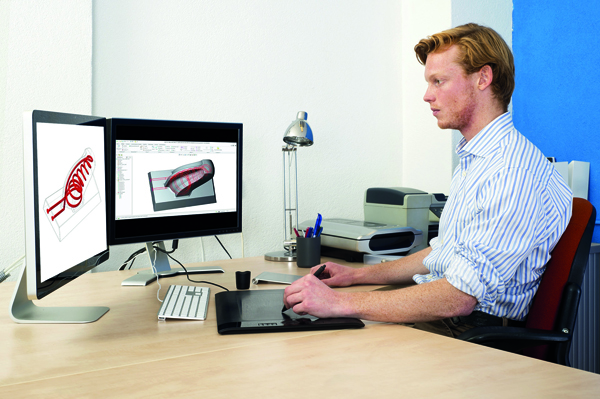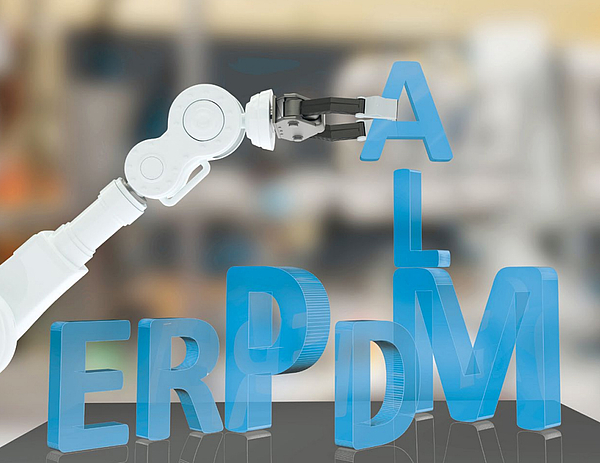
|
|
The use of PLM functions and services from the cloud is also enjoying growing acceptance in Germany. However, many PLM users are faced with the question of whether it is worth the effort of migrating their customized PLM solutions to the cloud and, if so, how best to proceed. PROSTEP's PLM consultants are supporting them in defining a sustainable cloud PLM strategy. In the private domain, we have long been accustomed to storing our personal data in the cloud and using cloud-based services for our leisure activities. But the cloud has also long since developed into an engine room for the Internet of Things (IoT) and professional Internet services such as real-time navigation, autonomous driving and data analysis. The increasing digitalization and networking of our private and professional lives suggest that the cloud will also play an even more important role for companies in future. So it is no longer a question of deciding whether to use the cloud or not, but of how and for what purpose it should be used. Many companies use cloud solutions every day, starting with company mobile phones, which are nowadays inconceivable without the cloud. Office applications, payroll and HR management programs, customer relationship management (CRM) and ERP applications are also increasingly migrating to the cloud, often in the form of multi-tenant applications in a public cloud where data is only separated from potential competitors by virtual boundaries. So why should PLM be an exception? Especially when one considers the entire product life cycle, including the operating phase, and not just the product data management functions familiar from the CAD world. Cloud PLM: just a matter of time Product development is thus faced with a twofold challenge: On the one hand, it has to develop products into "things" on the Internet in order to support cloud-based services and business models. On the other hand, it has to be able to use cloud-based technologies for its own processes in order to exploit the potential of the cloud for increased efficiency and cost savings. This is a difficult balancing act, since the development processes and methods have to be changed, while at the same time implementing them in a new IT infrastructure. 
For a long time, the cloud was not an issue in the development of products because companies did not want to reveal their product data to third parties so as to protect their intellectual property. In recent years, however, thinking has begun to change. In particular, medium-sized companies with limited IT budgets have recognized that their intellectual property can actually be even more at risk in house than in the cloud infrastructure of a trustworthy provider who has a professional, focused approach to the issue of data security. At the same time, many companies have already garnered experience with other security-critical applications such as ERP or CRM from the cloud and discovered that the security technologies that are available are effective. According to many market observers, PLM will not be able to resist this trend towards the cloud over the long term. PLM manufacturers are now experiencing growing demand for cloud-based applications, especially in new customer business, and are developing the offerings to meet this demand. However, the details vary considerably. The spectrum ranges from standardized SaaS (software as a service) models from a public cloud to custom PLM applications that are hosted on a cloud-based infrastructure (IaaS) and which may be managed by the software providers. It is not always easy for potential users to assess which cloud model best meets their requirements in terms of functionality, data security and cost. A sober assessment of cloud risks Companies must therefore ask the right questions about the cloud when (re)defining their PLM strategy. In consulting projects, PROSTEP considers both the realities of the existing IT infrastructure and the further development of an existing IT strategy. Our consultants use enterprise architecture management methods to determine the relevant capabilities of the company and map them to the potential provided by the existing PLM infrastructure. This enables them to identify shortcomings and further develop the infrastructure in a targeted manner. They place the existing data sources correctly in the resulting map of PLM capabilities and, when extending the architecture, take into account which systems and product information are already being used in the cloud.

An overall picture of the workplace of the future is also important for evaluating a cloud solution. This workplace will include the traditional PLM-specific applications such as CAD, DMU, viewing and simulation programs, the ALM (application lifecycle management) specific applications resulting from the systems approach, as well as the possibility of integrating further applications along the product lifecycle. It goes without saying that the Office applications that are increasingly being provided from the cloud, and even social networking platforms, must also be taken into account here. The result is an envisioned target that must be compared with the realities of the PLM market with regard to the cloud in order to shape the technical implementation. So which PLM provider offers a suitable solution and does this also cover cloud-capable CAD applications and license models or just data and process management? CAD is a good and very practical yardstick for an engineering workplace in the cloud, which is dependent at all times on a stable and powerful network connection and thus places high demands on the quality and availability of the IT infrastructures. Due to their high graphics requirements, traditional CAD systems are a challenge in a virtualized environment. This can be solved on the server side thanks to powerful server graphics adapters, but at the same time the latency times of the network infrastructure must be adequate. And how can the network connection be guaranteed if employees wish to work from a home office or on the road? 
Even though security concerns involving the cloud have diminished, the issue of data security remains an important aspect when implementing a cloud PLM strategy. It is not just about whether data and intellectual property in the cloud are safe from being accessed by competitors, product pirates and/or government agencies, but also about protecting technology and process expertise. There must be certainty that the cloud operator will not draw any conclusions about technologies and processes from the meta information generated in the cloud and sell on this information to the detriment of customers. And it must be clear whether the data stored in the cloud will be treated in accordance with the provisions of the GDPR (General Data Protection Regulation) or other data protection regulations. An important question, and one that has been relevant not only since Microsoft announced the closure of its German trustee cloud services, is what happens to the data when the cloud operator changes. The risk of the lock-in effect plays an important role in strategic PLM decisions. When assessing cloud risks, it is therefore best to seek vendor-neutral advice. Integration activities are becoming more complex PROSTEP believes that a cloud PLM strategy cannot be defined separately from the company's overall digitalization strategy and must also take into account the current and future PLM landscape. Essentially, the trend away from monolithic PLM systems towards modular platform architectures with a large number of individual applications favors the use of cloud-based services. The cloud does not make traditional PLM considerations regarding integration and data exchange between different systems a thing of the past. Specialist integration expertise is still needed to master these aspects. Every PLM infrastructure requires a sound concept as to how the exchange of information between the various subsystems such as PDM, ERP and ALM can be organized. This is already a challenge in a company's own data center, which requires a high level of technical skill on the part of the IT team if the technical potential of the systems is to be exploited as best possible. But if the ERP system is in the SAP cloud, the Office portfolio in Microsoft Azure and the PDM system is managed by the preferred PLM provider, the complexity increases because it is necessary to link several clouds together. 
It is not without reason that the integration of cloud PLM and enterprise applications is the greatest concern companies have when thinking about cloud PLM, even eclipsing security concerns. This was one of the findings of a study by the American market research company CIMdata into the state of PLM in the cloud. In third place are the limited options for customizing pure cloud applications. At the same time, this makes it difficult to migrate existing PLM applications because they are themselves generally highly customized. Different migration strategies are therefore required depending on the type of cloud application or cloud offering. In particular, companies with existing PLM applications need to analyze very carefully the extent to which they can map the expertise inherent in their PLM data and processes in the cloud and under what conditions it pays to migrate their on-premises solutions. PROSTEP: a cloud-capable guide As a vendor-neutral PLM consulting and software company, PROSTEP is committed to helping our customers define their PLM strategy and design their future PLM landscape. Our consultants take into account the customers' digitalization strategy as well as their existing IT infrastructures and develop the approach appropriate for the customer on the basis of enterprise architecture management methods. Our many years of experience in integration and migration mean that we are also able to support customers in implementing their cloud PLM strategy. Since some of our own software tools can already be used in cloud environments, we are very familiar with the requirements relating to the security architecture. We are ready for the cloud. |
|
| © PROSTEP AG | ALL RIGHTS RESERVED | IMPRESSUM | DATENSCHUTZERKLÄRUNG | HIER KÖNNEN SIE DEN NEWSLETTER ABBESTELLEN. |

